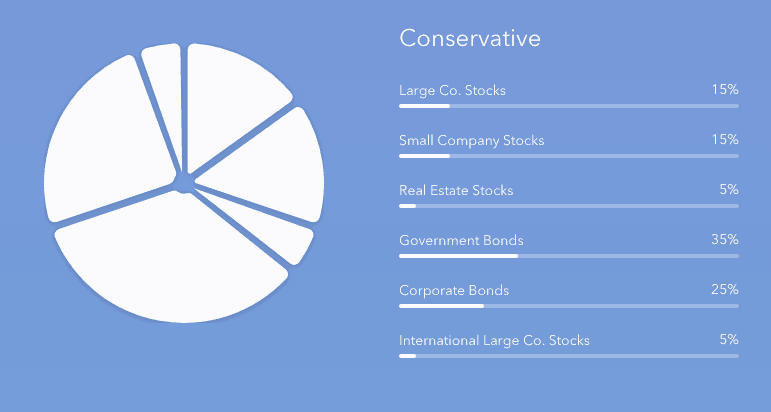

Wealthfront recently added a few new features to its platform, which should be popular with younger investors: a socially responsible investing ( SRI) portfolio and cryptocurrency. Still, those are a lot of funds and assets classes when you can create a low-cost, diversified portfolio with just three. One conspicuous exception was the iShares Dow Jones Select Dividend Index, which charges an expense ratio of 0.39%.įor the sake of diversification and tax efficiency, the recommended portfolio invested in five different asset classes: domestic stocks, developed economy international stocks, emerging markets, dividend stocks and municipal bonds. In all, Wealthfront picked 15 different mutual funds and ETFs, most of which had expense ratios of 0.10% or lower. That portfolio, with a risk tolerance score of 8.5 out of 10, consisted of 86% stocks and 14% bonds. Take the portfolio Wealthfront recommended to a 30-something who prioritizes maximizing gains as much as minimizing losses. Malkiel is now the chief investment officer at Wealthfront, and his philosophy undergirds how the robo-advisor invests your money. The crux of passive investing is that few money managers could consistently beat the returns of the average stock market index, like the S&P 500, so the better approach is to match its gains and cut fees to the hilt. Nearly half a century ago Burt Malkiel wrote “ A Random Walk Down Wall Street,” which helped usher in the passive-investing revolution. You gain access to more advanced strategies on a stock-based level once your account is over $500,000. Additionally, Wealthfront will recommend you employ tax-loss harvesting strategies to lower your potential tax bill when your taxable account reaches between $100,000 and $500,000. Wealthfront uses your answers to these questions to recommend a portfolio of funds designed to match your tolerance for risk. This insight is important not only for Wealthfront’s robo-advisor algorithms but also so you can understand your state of mind as an investor.
ACORN INVESTMENT REVIEWS SERIES
If you choose the long-term investing option, you’re prompted to answer a series of questions to gauge your risk tolerance.īesides your age (which helps set a baseline for what percentage of your portfolio should consist of stocks), Wealthfront also assesses your general risk tolerance by asking about your priorities (like maximizing gains or minimizing losses) as well as your likelihood to sell in a panic when the market dips. Wealthfront Cash is a cash management account that pays an APY of 4.80%. The platform offers its own 529 college savings plan. You may choose a traditional IRA, a Roth IRA or a SEP IRA. For this option, you open an individual retirement account ( IRA). This option gives you a taxable investment account. Wealthfront sells itself as a robo-advisor that helps you “use technology to make money on all your money.” When you first sign up for the platform, you begin by letting it know exactly how you’d like to make money on your money: If the idea of graphs, multiple accounts and projections on all aspects of your financial life makes you squeamish, consider alternatives.Īccount details and annual percentage yields (APYs) are accurate as of March 24, 2023.

ACORN INVESTMENT REVIEWS FULL
Wealthfront’s full menu of services and tools can be extremely helpful, if not overwhelming. This rate is pretty standard in the robo-advising space, but Wealthfront has a higher initial contribution requirement than many of its peers. To open a Wealthfront account, you’ll need to pony up an initial contribution of $500 and pay an 0.25% annual advisory fee, in addition to any expense ratios charged by the funds that comprise your portfolio.
ACORN INVESTMENT REVIEWS FREE
Meanwhile, the Path tool gives anyone-including those without a Wealthfront account-a free 30,000-foot view of their financial situation simply by linking up their other accounts. The platform takes automation a step further with its Self-Driving Money service, which automatically allocates your paycheck to cover bills, college savings and investing goals. Like most robo-advisors, Wealthfront recommends a low-cost, tax-efficient diversified portfolio of exchange traded funds ( ETFs) and index funds that match your financial goals and risk tolerance. Wealthfront is best for someone who’s looking to make as few financial decisions as possible-as well as users who enjoy lots of features and messing around with graphs and charts.


 0 kommentar(er)
0 kommentar(er)
